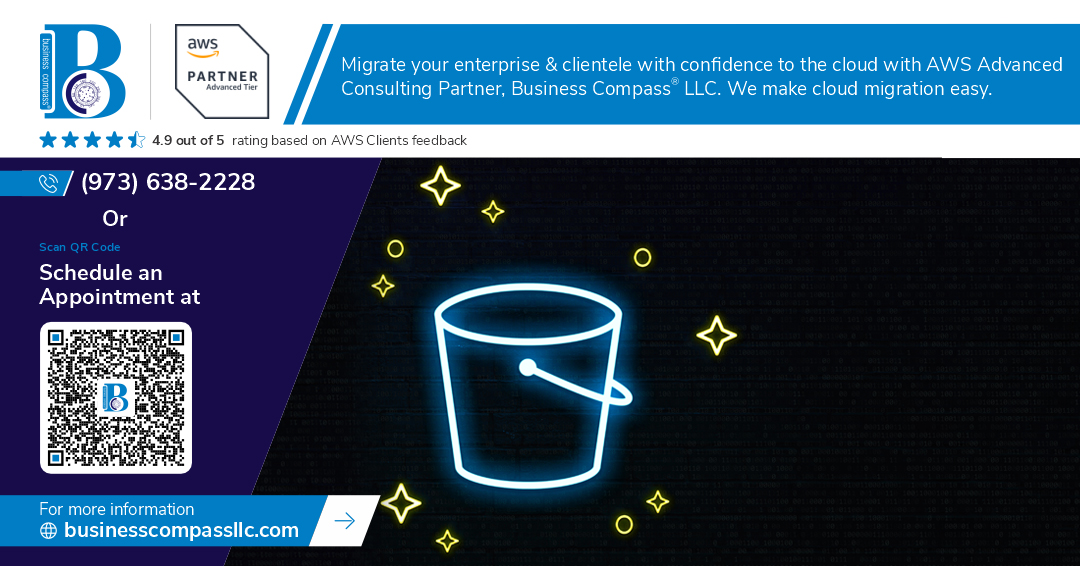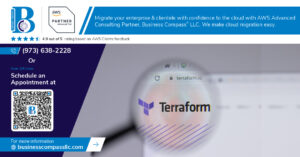Are you drowning in a sea of AWS storage options? 🌊 With so many choices available, it’s easy to feel overwhelmed when trying to select the right storage solution for your needs. But here’s the real kicker: choosing the wrong option could cost you big time.
From S3 to Glacier, EBS to FSx, each AWS storage service comes with its own unique pricing structure. Understanding these differences is crucial for optimizing your cloud costs and ensuring you’re not overpaying for storage you don’t need. But who has the time to sift through endless pricing pages and complex calculators?
Don’t worry, we’ve got you covered. In this comprehensive guide, we’ll break down the pricing models for S3, EBS, EFS, FSx, and Glacier, comparing them side by side. We’ll explore the nuances of each service’s cost structure, highlight key pricing factors, and even share some insider tips on how to optimize your storage costs. So, buckle up and get ready to become an AWS storage pricing pro! 💪
Overview of AWS Storage Services
A. S3: Object storage for scalable data
Amazon S3 (Simple Storage Service) is a highly scalable object storage service designed for storing and retrieving any amount of data from anywhere on the web. It offers industry-leading durability, availability, and performance.
Key features of S3 include:
- Unlimited storage capacity
- 99.999999999% (11 9’s) data durability
- Multiple storage classes for cost optimization
- Built-in security and encryption
- Versioning and lifecycle management
S3 is ideal for:
- Backup and restore
- Data archiving
- Big data analytics
- Content distribution
- Static website hosting
| Storage Class | Use Case | Availability | Retrieval Time |
|---|---|---|---|
| Standard | Frequently accessed data | 99.99% | Milliseconds |
| Intelligent-Tiering | Data with unknown or changing access patterns | 99.9% | Milliseconds |
| Glacier | Long-term archiving | 99.99% | Minutes to hours |
B. EBS: Block storage for EC2 instances
Amazon Elastic Block Store (EBS) provides persistent block-level storage volumes for use with Amazon EC2 instances. EBS volumes are network-attached and persist independently from the life of an instance.
Key features of EBS include:
- High performance and low latency
- Snapshots for point-in-time backups
- Encryption for data at rest and in transit
- Multiple volume types for different workloads
EBS is suitable for:
- Boot volumes for EC2 instances
- Databases
- Enterprise applications
- Development and test environments
C. EFS: Managed file storage for EC2
S3 Pricing Structure
Storage class options and costs
S3 offers multiple storage classes to meet different data access needs and budget constraints. Here’s a comparison of the main storage classes:
| Storage Class | Use Case | Availability | Durability | Cost (per GB/month) |
|---|---|---|---|---|
| Standard | Frequently accessed data | 99.99% | 99.999999999% | $0.023 |
| Intelligent-Tiering | Data with changing access patterns | 99.9% | 99.999999999% | $0.023 + monitoring fee |
| Standard-IA | Infrequently accessed data | 99.9% | 99.999999999% | $0.0125 |
| One Zone-IA | Non-critical, infrequently accessed data | 99.5% | 99.999999999% | $0.01 |
| Glacier | Long-term archival | 99.99% | 99.999999999% | $0.004 |
Data transfer fees
S3 data transfer pricing varies based on the direction and destination of the data:
- Inbound data transfer: Generally free
- Outbound to internet: Tiered pricing starting at $0.09/GB for the first 10TB/month
- Transfer between S3 and EC2 in the same region: Free
- Transfer to other AWS regions: $0.02/GB
Request and data retrieval pricing
- PUT, COPY, POST, LIST requests: $0.005 per 1,000 requests
- GET, SELECT, and all other requests: $0.0004 per 1,000 requests
- Data retrieval for Glacier: Starts at $0.01 per GB, varies by retrieval type
Management and analytics charges
S3 offers various management and analytics features:
- S3 Inventory: $0.0025 per million objects listed
- S3 Analytics: $0.10 per million objects monitored per month
- S3 Object Tagging: $0.01 per 10,000 tags per month
With these pricing structures, businesses can tailor their S3 usage to optimize costs while meeting their specific storage and data management needs.
EBS Cost Breakdown
Volume types and their pricing
Amazon EBS offers several volume types to cater to different performance and cost requirements. Let’s explore the main volume types and their pricing structures:
| Volume Type | Description | Price Range (per GB-month) |
|---|---|---|
| General Purpose SSD (gp3) | Balance of price and performance | $0.08 – $0.10 |
| General Purpose SSD (gp2) | Default for most workloads | $0.10 – $0.12 |
| Provisioned IOPS SSD (io2) | Highest performance SSD | $0.125 – $0.15 |
| Throughput Optimized HDD (st1) | Low-cost HDD for frequently accessed workloads | $0.045 – $0.055 |
| Cold HDD (sc1) | Lowest cost HDD for less frequently accessed workloads | $0.015 – $0.025 |
Snapshot storage fees
EBS snapshots are crucial for data backup and disaster recovery. The pricing for snapshots is based on the actual amount of data stored:
- Standard tier: $0.05 per GB-month
- Archive tier: $0.01 per GB-month (with retrieval fees)
Data transfer costs
Data transfer fees apply when moving data between EBS volumes and other AWS services:
- Inbound data transfer: Usually free
- Outbound data transfer: Tiered pricing based on volume, starting at $0.09 per GB
IOPS charges for Provisioned IOPS volumes
For io2 volumes, additional IOPS charges apply:
- $0.065 per provisioned IOPS-month (up to 64,000 IOPS)
- $0.046 per provisioned IOPS-month (above 64,000 IOPS)
Understanding these cost components is crucial for optimizing your EBS expenses. Now, let’s examine how EFS pricing differs from EBS and offers unique advantages for certain use cases.
EFS Pricing Model
Storage capacity costs
Amazon EFS pricing is based on the amount of storage you use, measured in GB-months. The pricing tiers are as follows:
| Storage Tier | Price per GB-month |
|---|---|
| 0-50 TB | $0.30 |
| 50-100 TB | $0.28 |
| 100-500 TB | $0.26 |
| 500+ TB | $0.24 |
As you store more data, the price per GB decreases, offering cost savings for larger datasets.
Throughput modes and pricing
EFS offers two throughput modes:
- Bursting Throughput: Included with your storage costs
- Provisioned Throughput: Additional cost based on MiB/s provisioned
Provisioned Throughput is priced at $6.00 per MiB/s-month, allowing you to scale performance independently of storage.
Data transfer fees
Data transfer costs vary depending on the direction and destination:
- Inbound data transfer: Free
- Outbound to the internet: Tiered pricing based on volume
- Transfer between AWS services in the same region: Free
Infrequent Access storage class option
EFS Infrequent Access (IA) offers lower-cost storage for less frequently accessed files:
- 92% lower cost compared to Standard storage
- Automatic lifecycle management moves files to IA after 30 days of no access
- Retrieval fee of $0.01 per GB
This option helps optimize costs for rarely accessed data while maintaining the flexibility of EFS.
Now that we’ve covered EFS pricing, let’s explore the pricing factors for Amazon FSx, another file storage service offered by AWS.
FSx Pricing Factors
File system deployment options
When considering FSx pricing, the deployment options play a crucial role in determining costs. Amazon FSx offers two main deployment types:
- Single-AZ: Lower cost, suitable for dev/test environments
- Multi-AZ: Higher availability, ideal for production workloads
| Deployment Type | Cost | Availability | Use Case |
|---|---|---|---|
| Single-AZ | Lower | Standard | Development, Testing |
| Multi-AZ | Higher | High | Production, Critical Workloads |
Storage capacity costs
FSx pricing is directly tied to the amount of storage you provision. Costs vary based on:
- File system type (Windows, Lustre, NetApp ONTAP)
- Storage capacity (measured in GB)
- Storage type (SSD or HDD)
Throughput and IOPS charges
FSx performance is measured in throughput and IOPS, which affect pricing:
- Provisioned throughput: Billed per MBps
- IOPS: Included in base price, with options for additional IOPS
Factors influencing throughput and IOPS costs:
- File system type
- Workload intensity
- Performance requirements
Backup and data transfer fees
Additional costs to consider in FSx pricing include:
- Backup storage: Priced per GB-month of backup data
- Data transfer:
- Inbound data transfer: Usually free
- Outbound data transfer: Charged based on destination and volume
Now that we’ve covered FSx pricing factors, let’s compare pricing across different AWS storage services to help you make informed decisions for your specific use cases.
Glacier Cost Considerations
Storage tier options and pricing
Amazon Glacier offers multiple storage tiers, each with its own pricing structure. Let’s compare these tiers:
| Tier | Description | Price (per GB/month) |
|---|---|---|
| Glacier Instant Retrieval | Millisecond retrieval | $0.004 |
| Glacier Flexible Retrieval | Minutes to hours retrieval | $0.0036 |
| Glacier Deep Archive | Hours to days retrieval | $0.00099 |
The choice of tier depends on your data access needs and budget constraints. Glacier Deep Archive is the most cost-effective for long-term, rarely accessed data.
Data retrieval fees
Retrieval costs vary based on the chosen tier and retrieval speed:
- Instant Retrieval: Free
- Flexible Retrieval:
- Expedited: $0.03 per GB
- Standard: $0.01 per GB
- Bulk: $0.0025 per GB
- Deep Archive:
- Standard: $0.02 per GB
- Bulk: $0.0025 per GB
Data transfer costs
Data transfer pricing follows AWS’s standard model:
- Inbound data transfer: Free
- Outbound to internet: Tiered pricing starting at $0.09 per GB
- Transfer to other AWS services: Varies by service and region
Minimum storage duration charges
Glacier imposes minimum storage duration charges:
- Instant Retrieval: 90 days
- Flexible Retrieval: 90 days
- Deep Archive: 180 days
Early deletion results in prorated charges for the remaining days. This policy encourages long-term storage and should be factored into your data lifecycle management strategy.
Now that we’ve explored Glacier’s pricing structure, let’s compare how it stacks up against other AWS storage services.
Comparing Pricing Across Services
A. Storage cost per GB
When comparing storage costs across AWS services, it’s crucial to understand the pricing differences per gigabyte. Here’s a breakdown of the storage costs for various AWS services:
| Service | Storage Cost per GB/month |
|---|---|
| S3 Standard | $0.023 |
| EBS (gp2) | $0.10 |
| EFS Standard | $0.30 |
| FSx for Windows | $0.13 |
| Glacier Deep Archive | $0.00099 |
As we can see, Glacier Deep Archive offers the lowest storage cost, making it ideal for long-term archival. S3 Standard provides a balance of performance and cost, while EFS Standard is more expensive but offers scalable file storage.
B. Data transfer fees comparison
Data transfer fees can significantly impact overall costs. Here’s a comparison of data transfer fees:
- Inbound data transfer: Generally free for all services
- Outbound data transfer:
- First 1 GB/month: Free
- Next 9.999 TB/month: $0.09 per GB
- Next 40 TB/month: $0.085 per GB
- Next 100 TB/month: $0.07 per GB
Note that these fees apply to data transferred out to the internet. Data transfer between AWS services within the same region is typically free.
C. Performance vs. cost trade-offs
When considering performance and cost, each service offers different trade-offs:
- S3: Offers high durability and availability at a reasonable cost
- EBS: Provides low-latency block storage for EC2 instances
- EFS: Offers scalable file storage with higher costs but better performance for shared access
- FSx: Provides high-performance file systems for specific use cases
- Glacier: Offers the lowest cost for infrequently accessed data with longer retrieval times
D. Use case-based pricing analysis
Choosing the right storage solution depends on your specific use case:
- Web content and media storage: S3 is often the most cost-effective choice
- Database backups: EBS snapshots or S3 for frequently accessed backups, Glacier for long-term storage
- Shared file systems: EFS for Linux workloads, FSx for Windows Server for Windows environments
- Big data analytics: S3 for its scalability and integration with analytics services
When selecting a storage service, consider factors such as access patterns, performance requirements, and data lifecycle to optimize costs while meeting your needs. Next, we’ll explore strategies to further optimize your AWS storage costs.
Cost Optimization Strategies
Choosing the right storage class
Selecting the appropriate storage class is crucial for optimizing costs in AWS. Different storage classes offer varying levels of performance, availability, and pricing. Here’s a comparison of some popular storage classes:
| Storage Class | Use Case | Availability | Retrieval Time | Cost |
|---|---|---|---|---|
| S3 Standard | Frequently accessed data | 99.99% | Milliseconds | $$$$ |
| S3 Intelligent-Tiering | Unpredictable access patterns | 99.9% | Milliseconds | $$$ |
| S3 Glacier | Long-term archival | 99.99% | Minutes to hours | $ |
To choose the right storage class:
- Analyze your data access patterns
- Consider performance requirements
- Evaluate cost-effectiveness for your specific use case
Implementing lifecycle policies
Lifecycle policies automate the transition of data between storage classes, helping you optimize costs over time. Key benefits include:
- Automatic migration of infrequently accessed data to cheaper storage tiers
- Deletion of unnecessary data to reduce storage costs
- Compliance with data retention policies
To implement effective lifecycle policies:
- Define clear rules based on object age or access patterns
- Regularly review and update policies as data usage changes
- Use S3 Analytics to gain insights into data access patterns
Leveraging reserved capacity options
Reserved capacity options can significantly reduce storage costs for predictable workloads. Consider the following strategies:
- EBS Reserved Instances: Pre-purchase EBS capacity for a 1 or 3-year term
- EFS Provisioned Throughput: Reserve throughput for consistent performance needs
- FSx for Windows File Server: Utilize long-term commitments for cost savings
Monitoring and adjusting usage
Regular monitoring and adjustment of storage usage is essential for ongoing cost optimization. Implement these practices:
- Use AWS Cost Explorer to analyze storage spending trends
- Set up CloudWatch alarms for unusual usage patterns or cost spikes
- Regularly clean up unused or redundant data
- Optimize data compression and deduplication techniques
By implementing these cost optimization strategies, you can significantly reduce your AWS storage expenses while maintaining performance and reliability. Next, we’ll summarize the key takeaways from our comparison of AWS storage and data management services.
AWS offers a diverse range of storage and data management services, each with its unique pricing structure and use cases. From the versatile S3 for object storage to the high-performance EBS for block storage, and the scalable EFS for file storage, businesses have multiple options to choose from. FSx provides specialized file systems, while Glacier offers cost-effective archival storage. Understanding the pricing models of these services is crucial for optimizing costs and selecting the most suitable solution for your specific needs.
When comparing costs across AWS storage services, it’s essential to consider factors such as data access patterns, storage duration, and performance requirements. By implementing cost optimization strategies, such as leveraging storage tiers, utilizing lifecycle policies, and right-sizing resources, organizations can significantly reduce their storage expenses while maintaining the required performance and availability. Regularly reviewing and adjusting your storage architecture based on changing needs and usage patterns will help ensure you’re making the most of AWS’s flexible and scalable storage solutions.



















